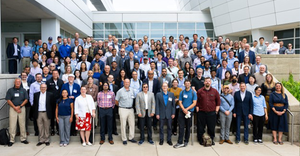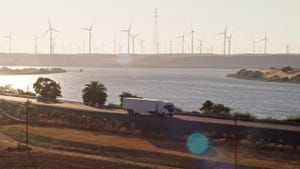Scoring Direct Hits: Developing An Effective Web Site
May 1, 1996
Warren W. Smith
Maintaining a website is like owning a pet: Both require regular feeding and constant attention. As your website grows and develops, you'll find that it's not only possible, but necessary, to teach an old site new tricks.
"As your site evolves, you must track your hit rate. Use that information to update and refine your homepage to keep it current, interesting to your target audiences and easy to find," said Kay Rooker, marketing information manager for Woodward-Clyde Group Inc., Denver.
Last August, this geo-environmental firm launched its web site (http://www.wcc.com); the original version featured fact sheets, profiles of the company's practice areas and a bi-monthly regulatory newsletter. The site's original homepage also featured large, full-page graphics - which became a detriment in the long run.
"Every page of your website is important, but your homepage should be the one that grabs the reader's attention and gets the audience to browse through the rest of your site," said Rooker. "Remember users ... [who have] slow modems because bringing up big graphics takes time. The user will get frustrated, push the 'stop' button and go on with the next search."
After the company's site was up and running, changes in staff responsibilities made it difficult to maintain timely information such as newsletters and fact sheets. Consequently, Rooker was assigned to be the "webmaster," charged with keeping the site up-to-date and relevant.
"When you design your web page, [make it] easy ... to maintain from that point forward," she advised. The information's timeliness should take precedence over a pretty presentation, she said. "That's what we're concentrating on now, [so users can] upload our new information quickly."
Although the website still features professionally produced graphics, the homepage now emphasizes text, which includes the keywords "engineering," "environmental" and "geotechnical" in the first 25 words, to ensure the site isn't overlooked by the very basic search engines.
"There are all kinds of Internet browsers out there. Most do keyword searches to locate a particular type of website," Rooker explained. "As you develop your homepage, ask yourself what information your audience will be seeking. Will they be searching for information about hazwastes, solid waste or environmental consultants? Some web browsers will look through every word, some will just look at the first 25 words and others will allow you to 'register' your keyword or phrase."
Of course, users aren't the only people to consider, according to Rooker. "Don't forget your employees during this process," she said. "Most of our employees are proficient computer users, and a professional website is a source of pride and belonging for them."
Like many in the waste industry, Woodward-Clyde is still realizing the commercial opportunities available on the web. "We got 11,500 hits on our homepage for the month of March," said Rooker. "That's an average of 360 hits per day. We figured we'd have hits from Australia, Canada and Germany, but we were surprised to see hits from Croatia, Israel, Thailand and the Netherlands, as well."
A traditional brochure or other marketing materials wouldn't necessarily garner such response, Rooker said. "Browsing through the web is a way for clients to 1prequalify consultants. Think of your homepage as a marketing tool and design it [accordingly]."
You May Also Like


